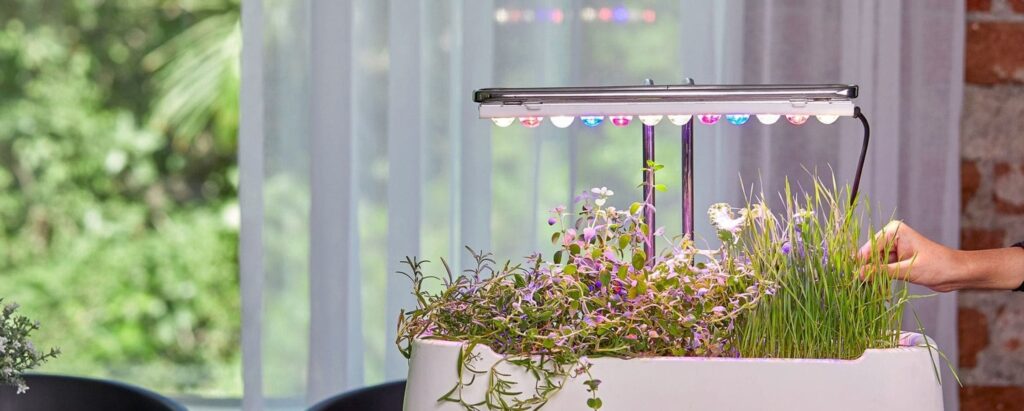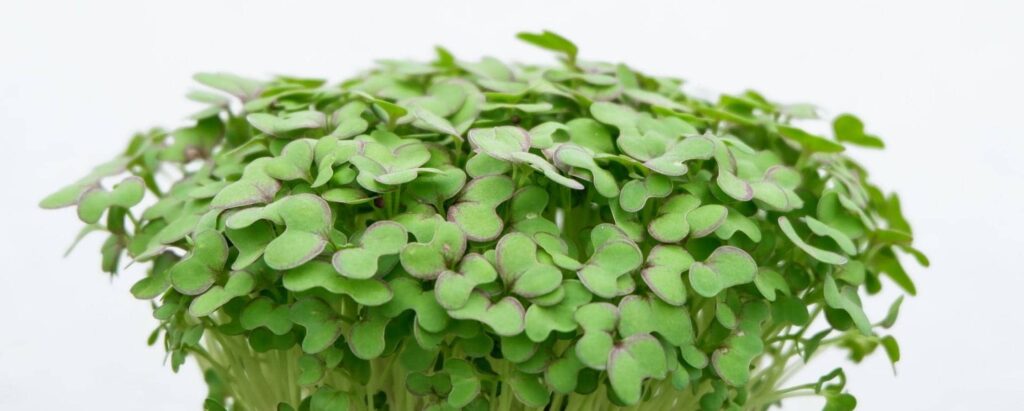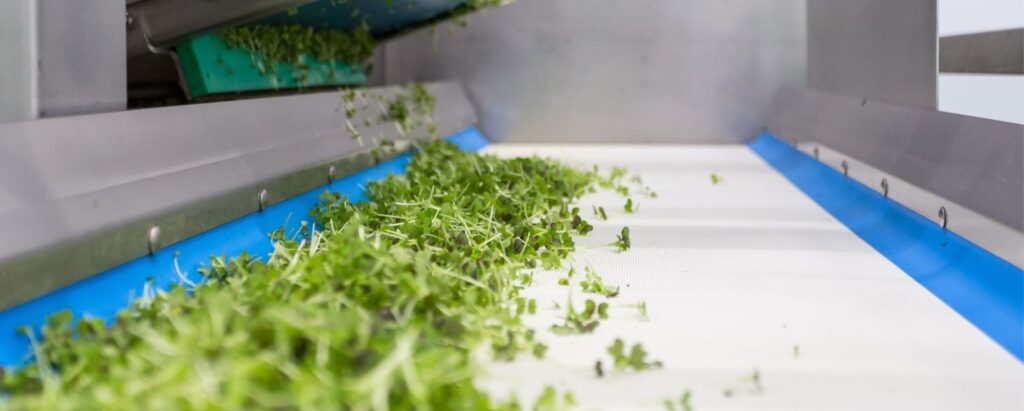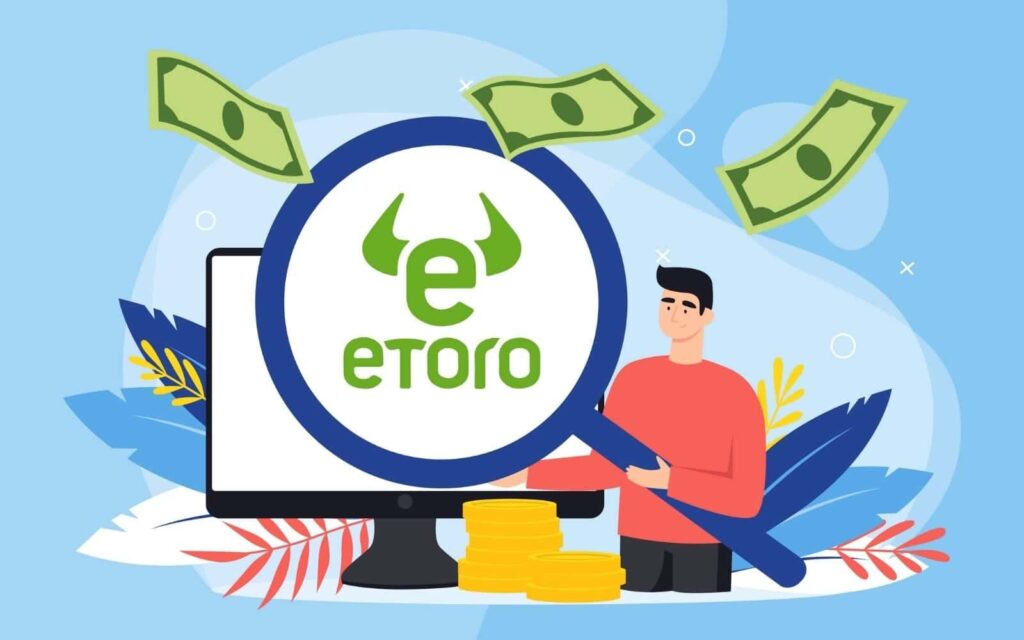Disclosure: This post may contain affiliate links. If you click on a link I may make a small commission at no extra cost to you. You can read the full disclosure here.
Last Updated on October 23, 2022 by Chris Panteli
Microgreens business plan
Do you have a green thumb and a love of growing plants? Then starting a microgreens business might be the perfect opportunity for you.
Microgreens are easy to grow, highly profitable, and take up as little space as a window ledge.
Is there a demand for microgreens?
The Global Microgreens Market is forecast to grow by around 7.5% between now and 2025, which shows there is a growing demand for the nutrient-packed superfood. Chefs want them to enhance dishes while private customers are realizing the health benefits of the crop.
The problem is, microgreens aren’t widely known about, so it can take some time and effort to get your first customers.
In this guide, we’ll show you how to grow microgreens, what you’ll need, and how to secure your first customers quickly and easily.
- Microgreens business plan
- What are Microgreens?
- Is it profitable to sell microgreens?
- Pros and cons of starting a microgreens business
- Plan for a Microgreens Business
- Getting Started with Microgreens
- How to Sell Your Microgreens
- How to Price Your Microgreens
- Is a Microgreen Business Right For You?
- Microgreens business plan
What are Microgreens?
Microgreens are just young versions of vegetables. They’re around one to three inches tall and have an aromatic flavor because of the concentrated nutrient content.
Because they’re just baby plants, they’re incredibly quick and easy to grow and can even be sold before being harvested.
They’re easy to grow in a greenhouse, on a window ledge, or even outdoors, so they’re a great option for all types of homes.
Microgreens are separated into six different families of edible plants as follows:
- Brassicaceae: Cauliflower, broccoli, cabbage, watercress, radish, and arugula
- Asteraceae: Lettuce, endive, chicory, and radicchio
- Apiaceae: Dill, carrot, fennel, and celery
- Amaryllidaceae: Garlic, onion, and leek
- Amaranthaceae: Amaranth, quinoa swiss chard, beet, and spinach
- Cucurbitaceae: Melon, cucumber, and squash
Sprouts vs microgreens
It’s important not to confuse microgreens with sprouts. Sprouts and microgreens are different stages of the growing cycle. Sprouts don’t have leaves and have a shorter growing cycle of just two to seven days (microgreens take from seven to 21 days).
Is it profitable to sell microgreens?
Microgreens are one of the most profitable crops you can grow at home. On average, they sell for around $50 a pound, and since they don’t take up a lot of space, it’s easy to grow a lot.
All you need is an area around the size of a shipping container and you can make up to six figures a year with some dedication and strategic marketing.
Pros and cons of starting a microgreens business

Before you jump online and start buying seeds, it’s important to consider both the pros and cons of starting a microgreens business.
Pros
- Low start-up cost
If you have no money to invest in your new business, you can get started with just one or two trays of microgreens and scale-up. Each tray costs around $2 to buy, and you’ll just need some basic supplies that we’ll talk about later.
Because of this, a microgreens business has incredibly low start-up costs. Marketing is also low-cost if you can find high-end restaurants, cafes, or private residences to sell to when you’re getting started.
- Fast turnaround time
Microgreens are ready to harvest after just one week, and you can grow them all year round. Crops like corn or wheat take an entire season to grow and harvest, which makes it a time-intensive business.
And because there’s such a quick turnaround time, you can experiment with different types of microgreens with little time investment to figure out what works best for you.
- High nutrition
All edible microgreens are known as superfoods since they’re packed with vitamins and minerals. This is appealing to restaurants and health-conscious consumers, making them easy to market.
Cons
- Optimizing growing
If you’re brand new to growing plants, it could take you some time to get to grips with the growing process and to find a routine that works for you. In the beginning, you might kill a lot of your stock as you learn the best techniques, so you’ll need patience while you figure it out.
- Getting a consistent client base
You’ll need to go out and find your first clients which can be difficult. Make sure you read up on each of the microgreens you sell so you know how to market them to local restaurants and other customers.
You might need to start out in farmers’ markets or local food markets which can take time to establish.
Recommended: How to Start an Urban Farming Business
Plan for a Microgreens Business

Let’s take a look at some of the most commonly asked questions there are when starting a microgreens business so you can make a successful business model.
How much room do you need to start growing microgreens?
You can start your business with just a window ledge if that’s all the space you have. As long as you have a sunny spot to grow and some space for a few tools, you’re good to go.
To scale your microgreens business, you’ll need a spare bedroom, greenhouse, or other small space to give yourself room to grow multiple crops at once.
Even so, the space they take up is minimal, and you can easily produce around 50 pounds every two weeks in 60 square feet of space. That works out at around $100 to $160 per square meter, depending on the microgreens you grow.
How much time does a microgreens business require?
Another great thing about microgreens is the little effort they require. With just 30 minutes every couple of days, you can easily grow a dozen trays.
Of course, the more you scale up, the more time you’ll need to dedicate to not only growing but harvesting, marketing, delivering, etc.
If you want to turn your business into a full-time gig, you’ll need to treat the process like a full-time job and work every day on it.
But this means your business can take up as much time as you want it to. If you’re looking for a weekend gig to make some extra cash, finding a single client to deliver to will take up no time at all and can be done around a full-time job.
What supplies do you need to start growing microgreens?
There are some basic supplies you’ll need to invest in to look after your microgreens and ensure healthy crops from the beginning:
- 10” x 20” trays with drainage holes.
- Paper towels for starting microgreen seeds.
- Growing lights if you don’t have adequate sunlight.
- A spray bottle to keep your seeds and trays moist.
- Seed – you can begin with any you like but we have some recommendations below.
- A scale to measure the weight of your microgreens for packaging.
- A sharp knife or scissors for harvesting.
- High-quality, organic potting soil.
- A small fan to keep your crops well ventilated.
- A small watering can for watering when the microgreens are a little bigger.
Although this might seem like a lot of supplies, they’ll only cost around a few hundred dollars (less if you can find supplies on marketplaces or second-hand).
Getting Started with Microgreens

If you’re ready to jump in and get started with your microgreens business, here’s how to begin.
The best microgreens to sell
There are dozens of microgreens to choose from and you’ll figure out which work best for your clients and growing skills. But here are four popular choices if you’re not sure where to begin.
- Radishes: These are very easy to grow and have an intense flavor that appeals to chefs, so these can be easy to market.
- Mixed salad: This is another one that’s easy to sell to restaurants and cafes. Look for a variety mix with arugula, cabbage, lettuce, etc., or make your own blend.
- Pea shoots: Peas offer a high yield, giving you more to sell, and they’re another variety that is popular with chefs. They also last a long time in the fridge so you can store them for longer.
- Sunflower: Most people are familiar with sunflowers so they are easy to sell to the public who are curious about the flavor. They’re nutty and sweet with a delightful crunch that is easy to market.
Growing and caring for your microgreens
Microgreens can be grown in either soil or a hydroponic system, but the easiest way to grow microgreens is definitely in soil. Hydroponics is more expensive to set up and takes more effort to maintain.
Soil also offers a higher yield and is less prone to disease which is a bonus.
All you need to do is set up a couple of trays with high-quality organic potting soil and you’re ready to plant.
Once you’ve planted seeds, make sure to keep the soil moist but not wet with regular watering. You’ll also need to make sure they have regular, indirect sunlight.
Harvesting microgreens
When your microgreens begin to grow, you’ll notice the first set of leaves develop. These are known as cotyledons. It’s best to wait until the second set of leaves develop, which are known as the true leaves.
To harvest your greens, use a sharp pair of scissors and cut them when they’re around four inches tall. Cut them close to the soil and then remove all traces of dirt.
Wash your microgreens in cool water to maintain freshness, and remove any damaged leaves before packaging.
How to package microgreens
If you’re selling your microgreens to restaurants, simple plastic bags will suffice. Restaurants will be looking to buy in bulk so won’t be worried about packaging.
However, if you’re selling to the public, you’ll need a more attractive packaging.
Bags, trays, or clamshell containers look attractive and are relatively cheap to buy in bulk. Think about the environmental impact of your packaging, but it’s also important to think about your bottom line.
How to Sell Your Microgreens

There are a few different client pools you can focus on when marketing your microgreens.
Chefs
You’ll need to produce an information sheet to give to local chefs that outlines the products you have available, your prices, and how they can place an order. Usually, microgreens are priced per 1lb bag to make ordering easy.
Visit local restaurants in your area or call to speak to the chef to get your first clients. Your goal should be to get them on a standing order so you have a regular income.
Residential customers
Many people will pay to have microgreens delivered to their door either weekly or biweekly.
You can either set this up directly with local customers, or you can set up a Community Supported Agriculture (CSA).
A CSA is a group of members who pay a fee to receive a share of microgreens, which is easier for you to grow in bulk and regularly.
Either way, create a high-quality brochure to post door-to-door to drum up some local business. You can also promote online in local groups for a wider audience base.
Farmers markets
Hiring a stall at a local farmers’ market is a great way to connect with potential customers looking for your product. Make sure to give out business cards to get repeat customers.
Wholesale
Grocery stores and other local shops will want to buy your microgreens wholesale to sell to customers. Most will want to have a 50% markup so make sure you have a wholesale strategy in place before pitching any local stores.
Although you’ll make less per tray with wholesale, you’ll be able to sell in bulk which will give you more orders.
How to Price Your Microgreens
When you’re working out how much to sell your microgreens for, start by working out your initial costs. This needs to include:
- All tools and supplies
- Seeds
- Electricity and other bills
Next, factor in how many hours you spend per week on your business. Your pricing should factor in a wage for yourself.
Once you have these costs, you can work out a healthy profit for your microgreens.
Other factors that will impact your pricing include local competition, your skill level, and the type of microgreens you sell.
In general, you can expect to make around $50 per pound. But don’t be afraid to tweak your pricing as you grow your business and become more comfortable with working out your costs.
Is a Microgreen Business Right For You?
Selling microgreens is a great business if you love growing and want to spend your days caring for plants. Not to mention you’ll be able to grow it to a highly profitable business with some time and investment.
If you’re excited about starting a microgreens business and want to learn more, make sure to check out our microgreens business case study to see how a successful business works in action.







